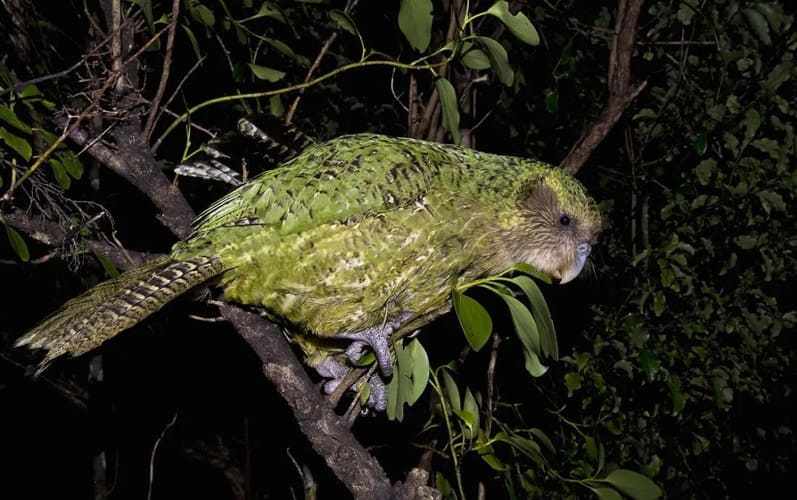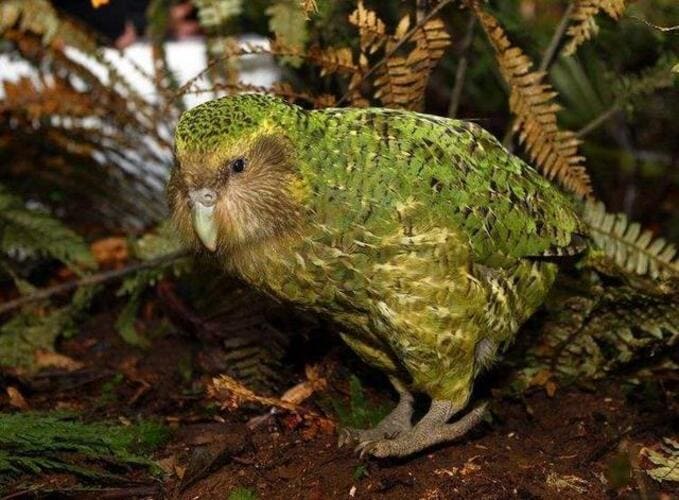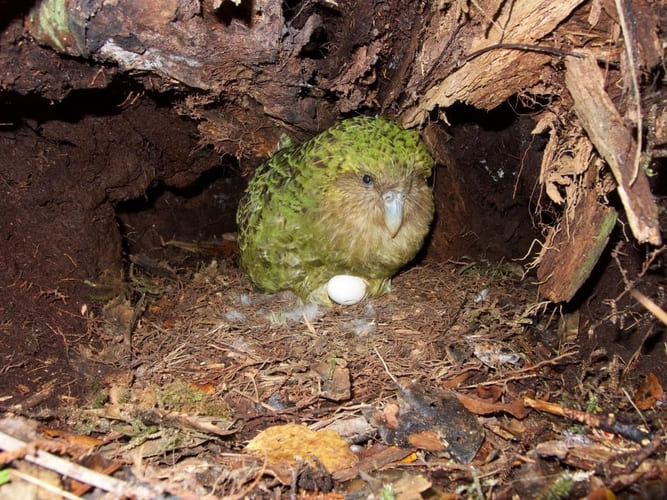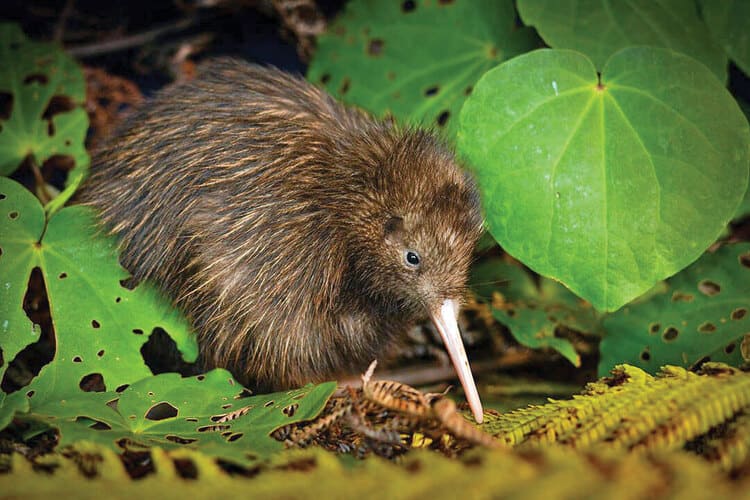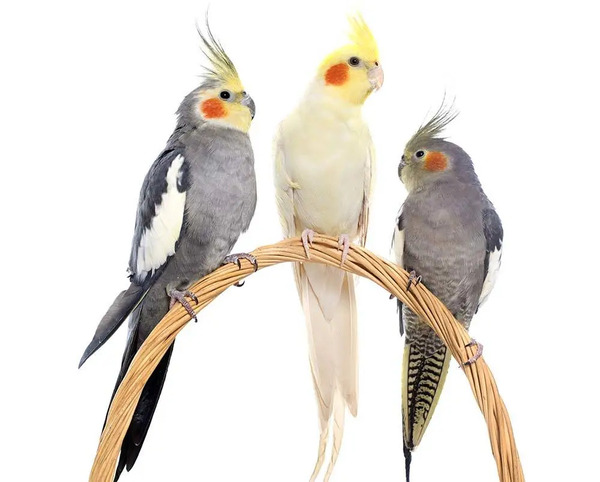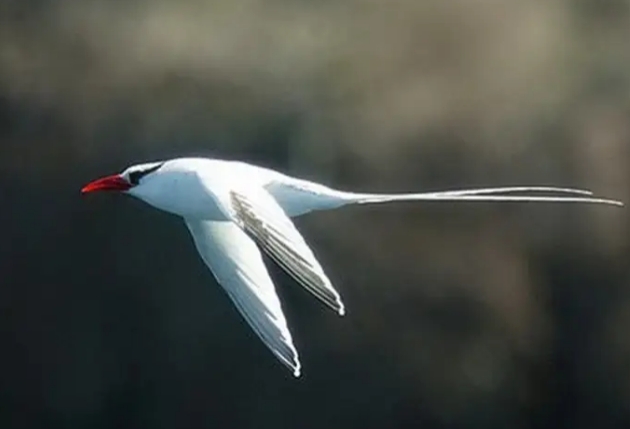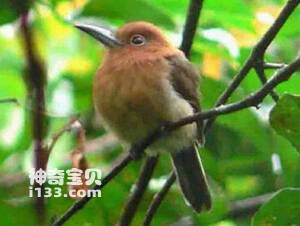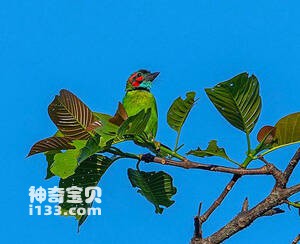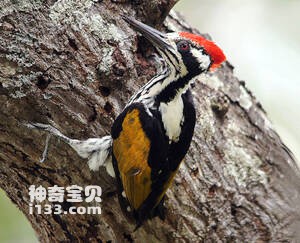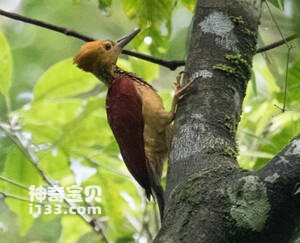Kākāpō
IUCN
CRBasic Information
Scientific classification
- name:Kākāpō
- Scientific Name:Strigops habroptilus
- Outline:Climbing birds
- Family:Strigopidae Strigops
Vital signs
- length:58–64 cm
- Weight:Females 1.3–2.0 kg; males 2.0–4.0 kg
- lifetime:Up to 40–60+ years
Feature
Flightless nocturnal parrot; lek breeding with low‑frequency booming; mast‑dependent reproduction; long‑lived.
Distribution and Habitat
Formerly across NZ forests; now on predator‑free islands and fenced sanctuaries in native forest/shrubland.
Appearance
Moss‑green mottled plumage; facial disc; short wings, long tail; strong legs and bill.
Details
Kākāpō (Strigops habroptilus) is New Zealand’s flightless, nocturnal parrot—the largest and among the longest‑lived parrots. Historically widespread across North and South Islands, it now survives only under intensive management on predator‑free islands and fenced sanctuaries. IUCN: Critically Endangered (CR).
Ecology & Behaviour
Ground‑dwelling but an agile climber and short‑distance glider. Feeds mainly on native plant leaves, shoots and fruits. Breeding is tightly linked to mast seeding (e.g., rimu). Males gather at leks and produce low‑frequency “booming” calls to attract females; females alone incubate and rear chicks.
Identification
Moss‑green, mottled plumage; prominent facial disc and whisker‑like bristles; short wings, long tail; stout legs and bill.
Reproduction & Longevity
Breeds only in mast years (intervals of 2–4+ years). Clutch 1–4 eggs, prolonged chick‑rearing; late maturity. Individuals can live 40–60+ years.
Threats & Conservation
Introduced predators (mustelids, cats, rats) causing high adult/chick mortality.
Small‑population risks including inbreeding and low genetic diversity.
Historic habitat loss from logging and land conversion.
New Zealand’s Kākāpō Recovery Programme employs predator control, supplementary feeding, artificial incubation, health screening, telemetry and genetic management. Numbers are increasing but require sustained, intensive effort.
FAQ
Q1. Why “owl parrot”?
The species has an owl‑like facial disc and is chiefly nocturnal.
Q2. Can it fly?
No true flight; it climbs and can glide short distances.
Q3. Why do they breed irregularly?
Breeding depends on forest mast seeding, which provides sufficient high‑energy food for chicks.
Q4. What is being done?
Predator‑free islands/fenced sanctuaries with intensive management (predator control, artificial rearing, genetic/health monitoring).

